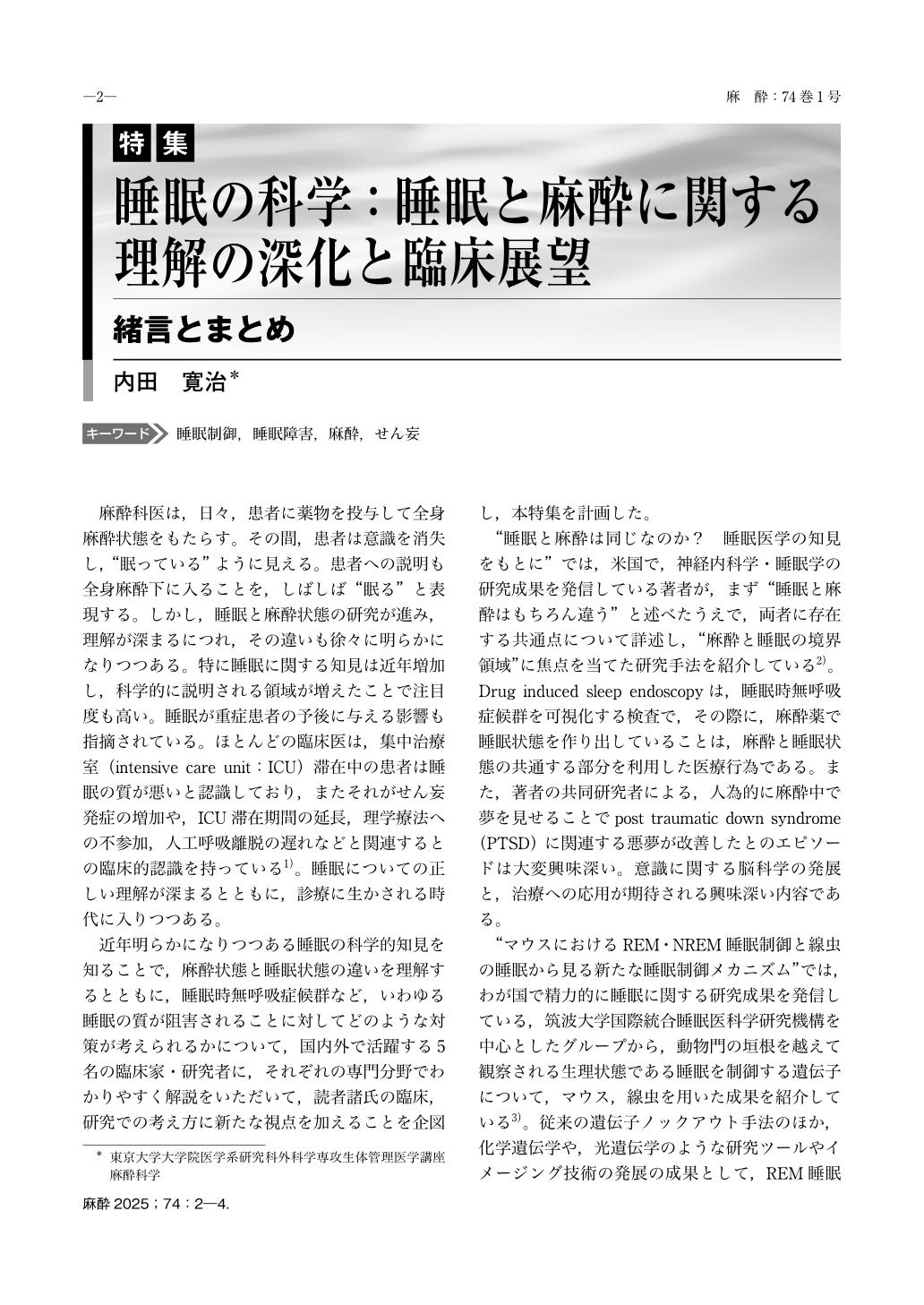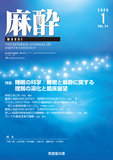Japanese
English
- 有料閲覧
- Abstract 文献概要
- 1ページ目 Look Inside
- 参考文献 Reference
麻酔科医は,日々,患者に薬物を投与して全身麻酔状態をもたらす。その間,患者は意識を消失し,“眠っている” ように見える。患者への説明も全身麻酔下に入ることを,しばしば “眠る” と表現する。しかし,睡眠と麻酔状態の研究が進み,理解が深まるにつれ,その違いも徐々に明らかになりつつある。特に睡眠に関する知見は近年増加し,科学的に説明される領域が増えたことで注目度も高い。睡眠が重症患者の予後に与える影響も指摘されている。ほとんどの臨床医は,集中治療室(intensive care unit:ICU)滞在中の患者は睡眠の質が悪いと認識しており,またそれがせん妄発症の増加や,ICU滞在期間の延長,理学療法への不参加,人工呼吸離脱の遅れなどと関連するとの臨床的認識を持っている1)。睡眠についての正しい理解が深まるとともに,診療に生かされる時代に入りつつある。
Anesthesiologists routinely administer anesthetic agents to induce general anesthesia prior to surgical procedures, and during the anesthetic state patients lose consciousness and appear to be ‘asleep.’ However, recent advances have highlighted key differences between natural sleep and the anesthetized state, and the impact of sleep on the outcomes of critically ill patients has gained increasing attention. In intensive care units(ICUs), patients often experience poor sleep quality, which has been linked to adverse outcomes such as a higher incidence of delirium, prolonged ICU stays, reduced participation in physical therapy, and delayed weaning from mechanical ventilation. As our understanding of sleep deepens, targeted interventions may improve patients’ prognoses. This seminar series reviews recent scientific discoveries regarding sleep;it differentiates sleep and anesthesia, and it addresses management strategies for sleep disorders such as sleep apnea. The goal is to provide readers with new perspectives that may enhance both clinical practice and patient outcomes.

Copyright © 2025 KOKUSEIDO CO., LTD. All Rights Reserved.


